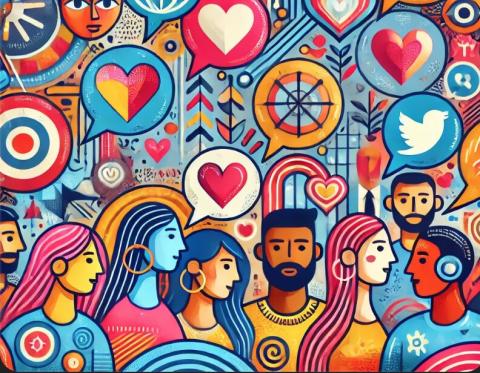
"Language processing" refers to how the brain 1. interprets linguistic information (understanding what others say), and 2. communicates with words (remembering words and talking). This process is what allows humans to make sense of relationships and share reality with each other. The ability to communicate and share emotions is what originated the idea of human beings living in collectives and advancing in the first place.
Verbal and written communication evoke emotional responses in the receiver because pre-existing emotions about ideas, words, and messages taint language reception to begin with. Inherently knowing this fact, emotions and perception of emotions determine how the senders use their language. Ultimately, because emotional states change how humans send language and receive it, the ability to identify how language rules emotion itself, how emotions and language develop together, and engage in conscious interaction with the two is powerful.
To take it a step further, culture then changes the context for these processes. Every individual culture addresses emotion differently within their own language and creates subsequent norms about emotions. Not every language has the same words to identify emotions, so not every language sees emotions the same. There are only really six "universally" recognized emotions: happiness, sadness, anger, fear, surprise, and disgust. Even then, not all of these emotions are exhibited or spoken about nearly the same way. In some cultures, while there may be a word for “anger,” it is going to be identified differently and mean something different when you ask someone to describe it.
What does anger look like in the cultures you identify with? What is the best word for it? Are there a variety or just one? When is the word used? What is the actual behavior or experience of anger to you --- and if captured in a snapshot?
